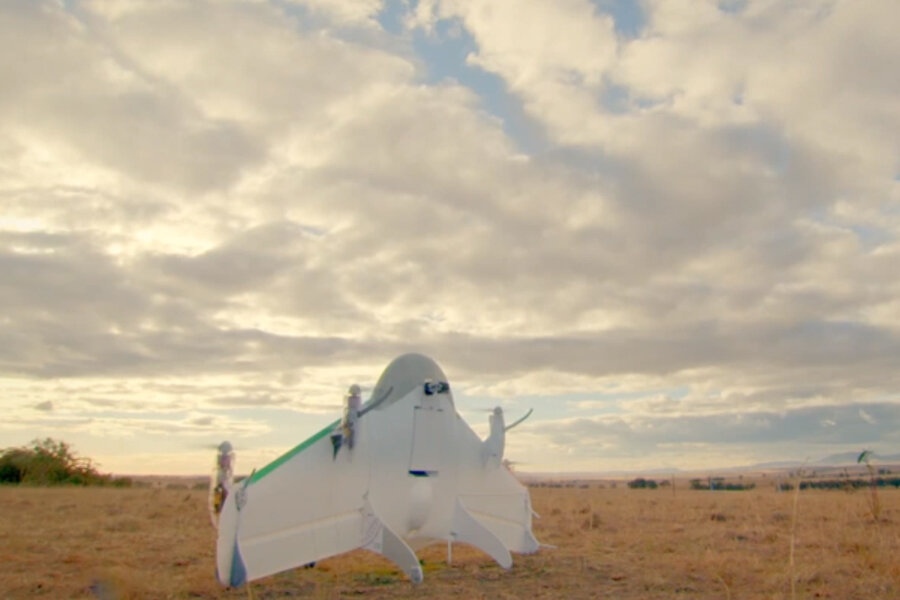Google delivery drone takes to the skies with 'Project Wing'
Loading...
It's a bird, it's a plane, it's a – Google drone?
Known as "Project Wing," the commercial drone prototype has come out of Google X, the search giant's secretive laboratory led by Google co-founder Sergey Brin that's used to develop ambitious new projects, such as the self-driving car.
Designed primarily to deliver goods, drones were successfully tested earlier this month in Queensland, Australia, a country with more lax regulation when it comes to drones. In a YouTube video depicting the aerial drop-off, a drone delivers items including dog food, animal vaccinations, candy bars, and water to two farmers.
Resembling a miniature space ship, and the envy of any remote-controlled aircraft enthusiast, Google's drone spans five-feet wide and stands two-and-a-half-feet tall with four propellers. It weighs about 22 pounds and uses what's known as a "dual mode" operation, meaning these flying machines can fly like a plane but has functions more reminiscent of a helicopter, such as taking off and landing without a runway and being able to hover in one spot for a prolonged period of time.
Soaring across the sky, the drone in the video eventually pauses above the farmers, dropping off a package. The package floats to the ground. A farmer hands a piece of food to his dog. The drone departs.
"Throughout history there have been a series of innovations that have each taken a huge chunk out of the friction of moving things around," Astro Teller, Google X's Captain of Moonshots, the company's name for large-scale projects, says in the video. "Project Wing aspires to take another big chunk of the remaining friction out of moving things around in the world."
Google is by no means the first player to begin testing commercial drones. Amazon has also been testing commercial drone delivery, proposing what it's calling Amazon Prime Air in December. Last month, Amazon asked the Federal Aviation Administration if it could begin testing drones, despite the agency's efforts to restrict the commercial use of unmanned aircraft. And Dominos has also experimented with drone technology for pizza delivery, delivering two pizzas in the United Kingdom last year.
But this relatively new technology has sparked concern among lawmakers. As is often the case with disruptive technology that could also pose new safety concerns, government officials are trying to determine how best to regulate commercial drones while at the same time not hampering innovation. Earlier this year at a Senate Commerce Committee hearing on drone policy, Sen. Dianne Feinstein (D) of California shared a story about how a drone had crashed right outside the window of her home. She used this story as an anecdote for why lawmakers should "proceed with caution" in permitting a more wide-scale use of drones.
In addition, common drone usage raises concerns of privacy, says Bryce Pilz, a law professor at the University of Michigan who specializes in tech start-ups and intellectual property.
"People are concerned about personal information being collected by [the drone]," he says. "What is the commercial company going to do with that information? What access is the government going to have to that information?"
Regarding safety issues, he says liability will be a tricky path to maneuver: Will companies such as Google and Amazon be accountable for safety or will that responsibility fall to third-party service providers, such as UPS or FedEx, who could also in theory get into drone delivery?
"There needs to be some apportionment of liability," he says. "Either the provider of the drone service is liable through its contract with Google and Amazon or you could have government regulation that says anyone engaged with this activity has to have X amount of insurance."
In June, the FAA gave approval to the energy corporation BP for the first-ever authorized commercial drone trip over land in Alaska.








